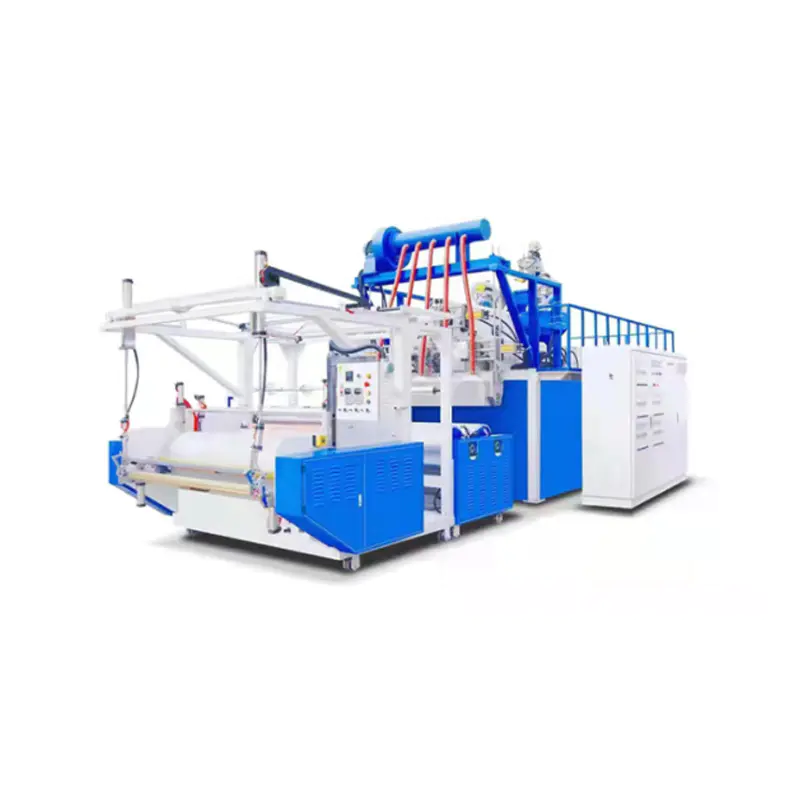Packaging Efficiency: Performance Characteristics of High-Speed Film Wrapping Machines
 By Admin
By Admin
In the ever-evolving world of packaging technology, high-speed film wrapping machines have carved out a pivotal role, transforming how manufacturers across food, beverage, consumer goods, and logistics sectors approach their final line of production. These advanced systems are not merely incremental upgrades — they represent a leap in speed, precision, and automation.
1. Wrapping Speeds
At the heart of any high-speed film wrapping machine is its throughput capacity. Modern machines can handle up to 100–150 wraps per minute, depending on the product size and wrapping configuration. This speed is achieved without compromising the integrity of the wrap or product. Servo-controlled motors and synchronized conveyors ensure that high speeds do not translate into packaging errors or material waste.
For industries dealing with large-scale production, such as bottled water, snack foods, and pharmaceuticals, this capability significantly enhances operational efficiency, reducing downtime and enabling faster turnaround from manufacturing to distribution.
2. Intelligent Film Tension Control
Film tension is a critical factor in wrapping quality. High-speed machines are now equipped with automated tension control systems that adapt in real-time to product variations and film roll inconsistencies. This feature ensures consistent wrapping tightness, preventing issues like film tearing, loose wraps, or product damage during transport.
By maintaining uniform tension, these machines contribute to enhanced product appearance and stability, which are vital for both shelf appeal and logistics performance.
3. Precision Cutting and Sealing Technology
Another performance feature is the high-precision cutting and sealing mechanism. Using either rotary or reciprocating blades, the machines incorporate heat-seal or cold-seal technology optimized for various film types including PE, PVC, and shrink film. These mechanisms are designed for maintenance and long-term durability, often with self-cleaning capabilities and wear-resistant components.
This ensures clean, strong seals that withstand handling and storage conditions while reducing film waste due to misalignment or overheating.
4. Advanced Automation and Smart Integration
Today's high-speed film wrapping machines are increasingly integrated with Industry 4.0 technologies. With touch-screen HMIs (Human Machine Interfaces), built-in diagnostics, and remote monitoring features, operators can quickly adjust parameters, view performance data, and receive maintenance alerts.
Integration with upstream and downstream systems (e.g., labeling, weighing, and palletizing machines) enables fully synchronized packaging lines. This not only maximizes throughput but also human error and operator intervention.

Some models even feature AI-driven optimization, adjusting wrap patterns and speeds based on product flow, environmental factors, and historical performance data.
5. Versatility Across Product Types and Formats
One of the reasons high-speed film wrapping machines have seen increased adoption is their flexibility. These systems can accommodate a wide variety of product dimensions, configurations (single items, multi-packs, trays), and materials.
Changeovers between product types can be completed in minutes, thanks to automated film feeding, format memory storage, and quick-release tooling. This reduces downtime and allows for seamless transitions between production runs, which is especially beneficial for companies with diverse product portfolios.
6. Energy and Material Efficiency
Despite their high output, these machines are designed with energy-efficient components such as low-power servo motors, regenerative drives, and optimized film usage algorithms. Modern high-speed wrappers can reduce film consumption by up to 20%, contributing to lower operating costs and improved environmental sustainability.
Heat management systems in shrink tunnels and sealing stations are also optimized to reduce power usage without sacrificing performance, aligning with growing corporate ESG (Environmental, Social, and Governance) commitments.
7. Safety and Ergonomics
High-speed operation does not come at the expense of safety. Modern wrapping systems include features such as light curtains, automatic stop sensors, and enclosed guarding systems to protect operators. Maintenance access points are ergonomically positioned to facilitate safe, efficient servicing.




